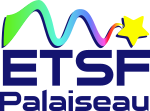Electronic excitations are probed by experimental techniques such as optical absorption, EELS and photo-emission (direct or inverse). From the theory point of view, excitations and excited state properties are out of the reach of density-functional theory (DFT), which is a ground-state theory. In the last twenty years other ab-initio theories and frameworks, which are able to describe electronic excitations and spectroscopy, have become more and more used:time-dependent density-functional theory (TDDFT) and many-body perturbation theory (MBPT) or Green's functiontheory (GW approximation and Bethe-Salpeter equation BSE). In fact, computational solutions and codes have been developed in order to implement these theories and to provide tools to calculate excited state properties.
The present school focuses on these points, covering theoretical, practical, and also numerical aspects of TDDFT and MBPT, and codes implementing them (ABINIT, DP, EXC).
Location: Ecole Polytechnique, Bat 411
Date: 6-9 February 2012
Organiser: F.Sottile
Lecturers: V. Veniard, F.Sottile, L.Reining, M.Guzzo
Plan of Lectures
Day 1 - Monday
- Introduction to Spectroscopy (Theory - 1/2 h)
- Microscopic-Macroscopic connection (Theory - 1 h)
- DFT with Abinit (hands-on - 3 h)
Day 2 - Tuesday
- Brief round table (1/2 h)
- Time Dependent DFT (Theory - 2 h)
- TDDFT with DP (hands-on - 3 h)
Day 3 - Wednesday
- Brief round table (1/2 h)
- Introduction to Many-Body Perturbation Theory (Theory - 1 h)
- Many Body Perturbation Theory: GW approximation (Theory - 1.5 h)
- GW with Abinit (hands-on - 4 h)
Day 4 - Thursday
- Brief round table (1/2 h)
- Bethe-Salpeter Equation (Theory - 2 h)
- BSE with EXC (hands-on - 3 h)
